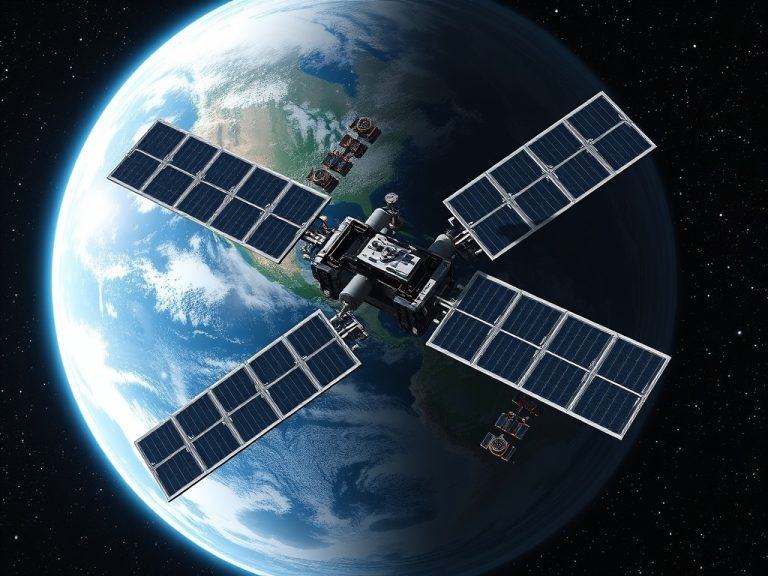
Satellite internet has come a long way over the years. It used to be a service just for a few, but now it plays a crucial role in connecting people worldwide. As technology improves and the demand for fast internet grows, the future of satellite internet looks promising. Here are some easy-to-understand trends and predictions about where this technology is headed.
1. Better Global Coverage
One of the biggest trends is the effort to provide internet access to everyone, especially in remote and rural areas. Companies like SpaceX are launching thousands of small satellites into low Earth orbit through projects like Starlink. These satellites can beam internet signals to places where traditional broadband doesn’t reach, such as farms, small towns, and developing countries. By expanding global coverage, millions of people will be able to connect to the internet for education, work, and communication.
2. Faster Speeds and Lower Latency
Speed and delay, or latency, have always been issues with satellite internet. Traditional satellites are far from Earth, which can slow down connection speeds and create delays. However, the new low Earth orbit (LEO) satellites are much closer, which reduces latency significantly. This means that users can enjoy faster internet connections that are comparable to or even better than some terrestrial services. As technology continues to improve, we can expect even quicker speeds, making satellite internet suitable for activities like online gaming, streaming, and video conferencing.
3. Working with 5G Networks
The combination of satellite internet and 5G technology is another exciting trend. As 5G networks expand, satellite providers are looking for ways to integrate their services. This hybrid approach can enhance connectivity, especially in areas where 5G towers are sparse. By working together, satellite and 5G technologies can provide a more robust internet service, ensuring that users have access to fast and reliable connections, no matter where they are.
4. New Technology Innovations
Advancements in technology are driving the future of satellite internet. Innovations such as phased-array antennas allow for better signal reception and transmission. These antennas can track satellites as they move across the sky, ensuring a stable connection. Additionally, new modulation techniques can increase the amount of data sent and received, further enhancing internet speeds. As satellite designs improve, we will see even more efficiency and reliability, making internet access smoother and more enjoyable.
5. More Competition
The satellite internet market is becoming more competitive, with several companies entering the field. In addition to SpaceX, major players like Amazon (with its Project Kuiper) and OneWeb are working on their own satellite constellations. This competition will likely lead to lower prices and improved services. As companies strive to attract customers, they will offer better packages and customer support, benefiting users who rely on satellite internet for their needs.
6. Changes in Rules and Regulations
As satellite internet becomes more common, there will be a need for new regulations. Governments around the world will need to create rules to manage the growing number of satellites in orbit and ensure fair competition among providers. These regulations will also address important issues like the allocation of radio frequencies and the prevention of space debris. By establishing clear guidelines, governments can help foster a healthy and competitive satellite internet market.
7. Environmental Awareness
Sustainability is becoming a key concern in the satellite industry. As the number of satellites increases, so do worries about space debris and its potential impact on the environment. Future satellite designs may focus on being more eco-friendly, using materials that are less harmful to space and the planet. Additionally, there are discussions about how to actively remove old or non-functional satellites from orbit to reduce debris. By prioritizing sustainability, the industry can ensure that satellite internet remains a viable option for future generations.
8. Increased Accessibility for Education and Work
As satellite internet expands, it will play a crucial role in education and remote work. Students in remote areas will have access to online learning resources, helping to improve educational outcomes. Similarly, professionals working from home or in rural locations will benefit from reliable internet connections, allowing them to collaborate and communicate effectively. This accessibility can lead to more job opportunities and a better quality of life for many people.
9. Enhanced Security Features
With the growth of satellite internet, security will be a significant focus. As more people rely on satellite connections for sensitive information, providers will need to implement robust security measures to protect users from cyber threats. Future satellite internet services may include advanced encryption and secure protocols to ensure that users’ data remains safe and private.
Conclusion
The future of satellite internet is bright and full of potential. With rapid advancements in technology, increased competition, and a focus on global coverage, satellite internet is set to become a common choice for many people around the world. By addressing challenges like speed, regulatory issues, and environmental concerns, the industry can transform how we connect and communicate. As satellite internet continues to evolve, it will open new doors for education, work, and connectivity, making the world a more connected place.






